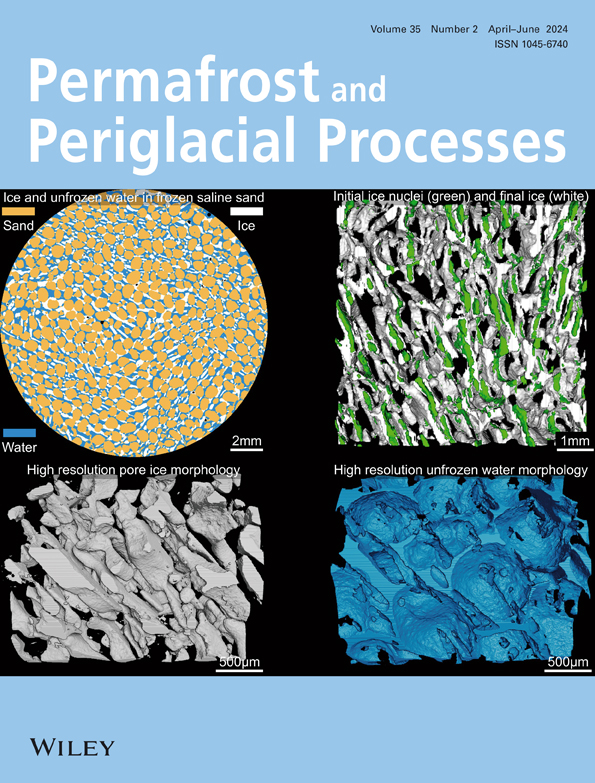Holocene ice wedges of the Kolyma Lowland and January paleotemperature reconstructions based on oxygen isotope records
IF 3.3
3区 地球科学
Q2 GEOGRAPHY, PHYSICAL
引用次数: 3
Abstract
Ice wedges in the Holocene deposits of alases and floodplains have been studied in the Kolyma Lowland region. Most ice wedges have been found within alases dated to between 11 and 4.2 cal kyr BP, corresponding to the Greenlandian and Northgrippian stages of the Holocene. This study confirms that the greatest intensity of ice wedge growth occurred during ~10.5–6 cal kyr BP. A decrease in their growth was mainly caused by alas draining and reduced sedimentation. In the last 4–4.5 cal kyr BP (defined as the Meghalayan stage of the Holocene), ice wedges continued to grow in old alases, sometimes as a younger generation, as well as within young alases and floodplains of the Kolyma River and its tributaries. Mean January air temperatures were quite stable during the Holocene and varied usually approximately between −33 and −41°C, with a slight cooling during the Meghalayan stage. Minor variations in mean January air temperature may indicate a stability of winter climate of northern Yakutia, probably as a result of the stable influence of the Siberian anticyclone.基于氧同位素记录的科雷玛低地全新世冰楔与1月古温度重建
对Kolyma低地全新世阿拉斯加和泛滥平原沉积物中的冰楔进行了研究。大多数冰楔是在阿拉斯加发现的,可追溯到11至4.2 cal kyr BP,对应于全新世的格陵兰和北格里普阶。这项研究证实,冰楔生长的最大强度发生在约10.5–6 cal kyr BP期间。它们的生长减少主要是由于阿拉斯加州的排水和沉积减少造成的。在最近的4–4.5 cal kyr BP(定义为全新世的梅加拉亚阶)中,冰楔继续在旧阿拉斯加生长,有时是年轻一代,以及在科莱马河及其支流的年轻阿拉斯加和泛滥平原内生长。1月的平均气温在全新世期间相当稳定,通常在−33和−41°C之间变化,梅加拉亚期略有降温。1月平均气温的微小变化可能表明雅库特北部冬季气候的稳定,这可能是西伯利亚反气旋稳定影响的结果。
本文章由计算机程序翻译,如有差异,请以英文原文为准。
求助全文
约1分钟内获得全文
求助全文
来源期刊
CiteScore
9.70
自引率
8.00%
发文量
43
审稿时长
>12 weeks
期刊介绍:
Permafrost and Periglacial Processes is an international journal dedicated to the rapid publication of scientific and technical papers concerned with earth surface cryogenic processes, landforms and sediments present in a variety of (Sub) Arctic, Antarctic and High Mountain environments. It provides an efficient vehicle of communication amongst those with an interest in the cold, non-glacial geosciences. The focus is on (1) original research based on geomorphological, hydrological, sedimentological, geotechnical and engineering aspects of these areas and (2) original research carried out upon relict features where the objective has been to reconstruct the nature of the processes and/or palaeoenvironments which gave rise to these features, as opposed to purely stratigraphical considerations. The journal also publishes short communications, reviews, discussions and book reviews. The high scientific standard, interdisciplinary character and worldwide representation of PPP are maintained by regional editorial support and a rigorous refereeing system.

 求助内容:
求助内容: 应助结果提醒方式:
应助结果提醒方式:


